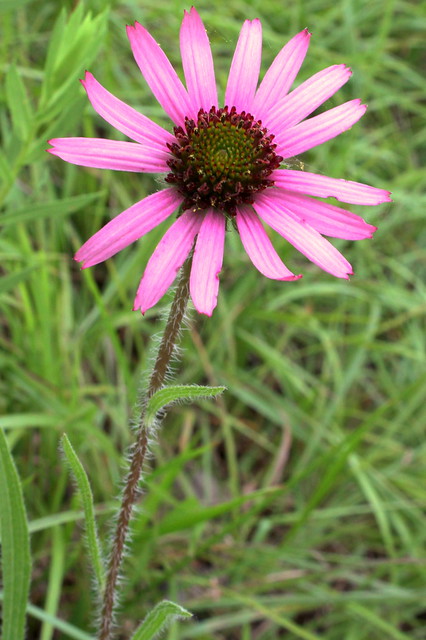
50 years ago, it was believed that the Tennessee Coneflower was extinct. That was until Vanderbilt biologist Elsie Quarterman discovered some by accident. At the time it was added as an endangered species. Since then, conservation efforts have helped this flower to spread, but there are still only about 10 fields where you can find it. These fields tend to be glades where the soil isn't very thick above limestone in an area close to where Davidson, Wilson and Rutherford Counties meet close to Percy Priest Lake. Thanks to the conservation efforts, this Coneflower is no longer endangered as of 2011 and is now listed as Imperiled.
The best place to see the Tennessee Coneflower is at the Couchville Cedar Glade State Natural Area. A one mile loop trail takes you through a field where several patches of these grow. Some of them are right along the trail like the ones seen here. The best time to go is late June and early July when they are at full bloom.

from Wikiipedia:
Echinacea tennesseensis, also known as the Tennessee coneflower or Tennessee purple coneflower, is a flowering plant in the family Asteraceae, endemic to the cedar glades of the central portion of the U.S. state of Tennessee.
Echinacea tennesseensis is a herbaceous perennial plant growing to 75 centimetres (2.46 ft) tall. The leaves are hairy, lanceolate, and arranged in a basal whorl with only a few small leaves on the flower stems.
The flowers are produced in a capitulum (flowerhead) up to 8 cm broad, with a ring of purple ray florets surrounding the brown disc florets.
A noticeable characteristic is its generally erect ray flowers, in contrast to the more drooping rays of its most similar congener, E. angustifolia (widespread throughout the prairie of the central U.S.) and other common Echinacea species such as E. purpurea.


No comments:
Post a Comment